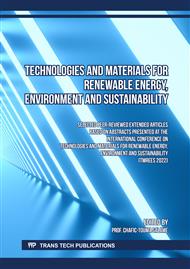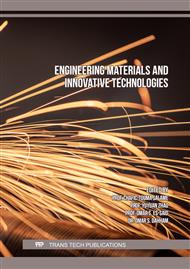p.73
p.83
p.93
p.105
p.117
p.125
p.137
p.147
p.157
Comparative Analysis and Performance Characteristics of Bio-Additives Induced Fuel Blend
Abstract:
Global demand for efficient transportation and energy dissipation in industries that use engine-powered equipment is enormous and largely supplied by liquid fuels derived from petroleum that power internal combustion engines (ICEs). Since the demand for jet fuel and diesel is anticipated to surpass gasoline consumption in the near future, low-octane gasoline components will become more widely available. As a result, low-octane gasoline components are expected to become more readily available, as demand for jet fuel and diesel is expected to outpace gasoline consumption in the near future. Experimentally, the effects of organic fuel additives (OFAs) on the performance of internal combustion engines were investigated. The findings compare plain, commercially available, neat gasoline samples to pure ethanol and fuel samples injected with OFAs. The development of various fuel blends; the analysis and characterization of fuel samples, including blended fuel samples; and the experimental investigation and comparative analysis of the engine performance powered by the various samples and blends of gasoline on the TQ TD115 MK11 testbed for single-cylinder engines were carried out in the study. The study demonstrated that the nanoadditions were superior to pure ethanol and undiluted gasoline in terms of performance. and showed that pure ethanol has a high torque value at lower speeds, but at speeds greater than 3000 rpm, D-NA outperformed ethanol additives and neat gasoline in terms of torque. At lower speeds, pure ethanol also had a high brake power value, but as speeds increased, samples containing D-NA outperformed ethanol additive and neat gasoline in brake power. Pure ethanol in a concentration of more than 3 has a high brake thermal efficiency value at lower speeds, but as speeds increased, samples containing D-NA outperformed ethanol additive and neat gasoline in terms of brake thermal efficiency. Keywords: Fuel additives; ethanol; brake power; Internal combustion engine; fuel
Info:
Periodical:
Pages:
117-124
Citation:
Online since:
December 2022
Keywords:
Price:
Сopyright:
© 2022 Trans Tech Publications Ltd. All Rights Reserved
Share:
Citation:



